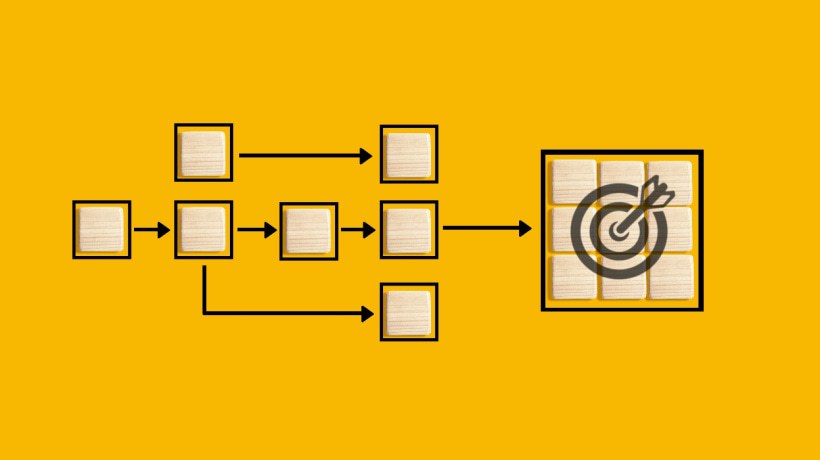Three Steps For Continuous Employee Experience Improvement
Congratulations! You listened to your employees, engaged your stakeholders, incorporated the foundational values of DEI&B, defined your metrics for success, and successfully launched your employee experience (EX) strategy. You are d-o-n-e! Hm, actually no, you are not done because the journey continues.
The employee experience morphs and changes because people, including your employees, are impacted by external drivers, like technological advances, digitization, cultural and societal shifts, demographics, and, as we have been experiencing lately, pandemics. To keep up with the volume, velocity, and complexity of change, you need to continuously improve your employee experience strategy by reviewing the data, revising, and launching the next version. Depending on the size of your organization, you will need to release the next version of the strategy every 12–18 months. This article offers three steps to guide you.
1. Review Your Strategy With Data Analytics
About three months after successfully launching your employee experience strategy, you will need to start reviewing the data you are collecting based on the metrics you've set. You will review the quantitative and qualitative data you collect from employees through surveys, employee feedback posted on employment sites, small group discussions, and one-on-one conversations.
You will need to ask several questions of the data, including, but not limited to, the following set of questions. What does the feedback tell you about how things are going? Are employees responding positively to the employee experience enhancement programs, opportunities, and learning you provided? What worked well and where do you need to make changes or tweaks to align with employee needs and wants? How is the employee experience impacting business performance outcomes?
Collating the responses to such vital questions will enable you to identify what worked well and where you need to make revisions. Depending on the size of your organization and the amount of data collected, this step may take between three to six weeks.
2. Revise Your Strategy Based On The Data
After collecting the data, you will need to analyze it and identify which goals were met and what gaps were revealed in the strategy. Start with the goals that were met and the things that worked well, and celebrate those wins! An easily implementable way to celebrate is by posting articles on the internal organization site and social media to highlight stories about employees pleased with their experiences.
Next, review and prioritize the data you collected in the first step above so that you can make meaningful and practical revisions to the strategy. The rule of thumb is to go for the low-hanging fruit and make changes in the strategy to deliver quick wins. Such modifications may include adding specific learning experiences or courses so that employees can gain new skills they've shared they need, improving communication frequency and channels, setting up an online two-way mentoring program, and instituting a learning stipend. For more extensive changes that will take longer to implement, you will have to set up a plan, allocate resources, and incorporate the changes.
At this stage, it is a good idea to engage the same group of leaders, stakeholders, and employees that you worked with from the onset of the journey when you first built the employee experience strategy. Doing so helps create continuity and consistency in your efforts and underscores your commitment to DEI&B values. Depending on the employee feedback and the tweaks that you need to make, this step may take anywhere between three weeks to six months.
3. Relaunch The Revised Strategy
A critical step in your continuous improvement journey is communication and two-way engagement in the organization. You will need to release the updated version of the employee engagement strategy where you highlight what worked and, importantly, also underscore what changes you are making due to employee feedback. Here you can incorporate elements of the agile methodology, and release the respective program elements separately as wins are identified, and changes are made to close the gaps. It is vital to highlight stories of how you listened to your employees and made changes to adapt the employee experience to address their needs. However, remember that posting articles on the intranet site is not enough. You will also need to engage leadership to underscore the message and publicly congratulate and engage with employees who shared their good and bad perspectives. You will need to engage employees by inviting them to be part of the teams implementing the changes.
Another easily implementable idea is to create short videos to capture the stories. To do so, you can assign internal storytellers who can reach out to the employees and record informal and short soundbites about their employee experience. Such videos can be set up in the C-A-R format: challenge, action, results. Under the "action" section, it is essential to highlight both the employees' actions to articulate their concerns and the actions your organization took to address and resolve the concerns. Such short interview format videos can help capture soundbites from employees for your current short-term relaunch efforts, and also serve as additional data points in your annual reviews in the future. The overall approach of engaging employees about what worked well and what needs improvement in the employee experience strategy helps build psychological safety, which is essential to the employee experience as it builds trust and underscores your organization's commitment to walking the talk.
Conclusion
As you can tell, the journey for optimizing employee experience never ends. Incorporating agile methodology concepts in your employee experience strategy is not only practical; it is necessary if you want to keep up with the volume, velocity, and complexity of change. Change is the only constant in the way we work and the ways your employees experience their interactions with your organization.
After successfully launching your employee experience strategy, you must continue to review, revise, and relaunch the next and improved version of the strategy every 12 or 18 months. Don't forget to reference all six articles in this series for step-by-step guidance on how to go about building, implementing, and optimizing your employee engagement strategy. Good luck!








